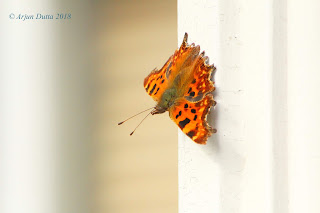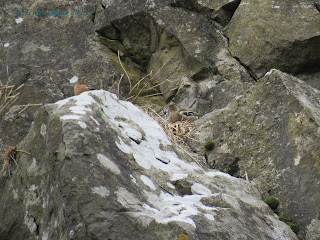Firstly, after returning from the Peak District, I bought a new camera from Lee Dingain - it was great to meet Lee, and I learnt a lot about cameras, especially new info that will be useful in the future. Buying a 2nd hand camera was useful, as it meant I could try and save up for a new lens as well in the coming months. So thanks a lot Lee!
In order to get used to the new camera, I decided to spend a lot of time at weekends and after school, which sadly soon restarted, birding from my garden and doing some 'quality' 'vizmigging.' With summer migrants heading S it meant I had a good chance of seeing some birds moving over, though my expectations were low.
I started at the beginning of September, but started doing it more on the 15th. Once this was a success, I spent another 3 days looking up and by Tuesday 18th these were the tallies.
With a possible very early fos, and 4 new for the garden, it was worthwhile.
Herring Gull 600+ (est.) - interestingly gull movement was slow and largely disappointing.
LBBG 40+ (est.)
BHG 22
GBBG 1
Common Gull 2 - has picked up since
Stock Dove 38
Woodpigeon 13
Common Buzzard 7 (3 SW, 2N, 2W)
Sparrowhawk 3
Hobby 2 (W, SW)
Peregrine (E)
Red Kite 1 (NW)
Meadow Pipit 5 (SE)
Pied Wagtail 2
Barn Swallow 18 (SW/SE)
House Martin 33 (SW/SE)
Great Spotted Woodpecker 1
Greenfinch 2
Parakeets - too many (200+)
Jackdaw 100+ (est)
Sand Martin 4 (SW)
Grey Wagtail 4 (SW)
Yellow Wagtail 5 (S/SW) - a slightly unexpected passage, with higher numbers than I'd anticipated.
Tree Pipit - most surprising and unusual (SW)
Fieldfare - probable early bird high W (FOS)
As seen from the above the rarer highlight was definitely a Tree Pipit, that swept SW on Sunday morning, with its high pitched 'tzip' like call making it a distinguishable pipit. I recorded my sightings in a logbook, as seen below.
For the rest of September I did a little more vismigging but less of it:
On the 24th, 4 Yellow Wagtail flew over late evening as did 13 Mipit.
On the 26th, after a Yellow and Grey Wagtail flew over my school, with a Hobby in pursuit of the Yellow, an afternoon produced 2 Linnet at home (a first.)
On the 28th, a bird came over calling with a soft 'seoo' type call, and the awful picture convinced me to think f Reed Bunting.
For the rest of September I did a little more vismigging but less of it:
On the 24th, 4 Yellow Wagtail flew over late evening as did 13 Mipit.
On the 26th, after a Yellow and Grey Wagtail flew over my school, with a Hobby in pursuit of the Yellow, an afternoon produced 2 Linnet at home (a first.)
On the 28th, a bird came over calling with a soft 'seoo' type call, and the awful picture convinced me to think f Reed Bunting.
Most of the pictures of birds I took were silhouettes due to the small lens, so here are a few that I did get pictures of.
Overall, I was pleased with the new camera as well as the quality of overhead birds. It just shows that birding doesn't mean you have to venture too far afield to have success, nor do you need to be too ambitious. Sometimes, even in urban areas, the birds can come to you.
 |
| My logbook (sorry for the poor writing) |
 |
| Fly on Fungus - personal favourite! |
 |
| Chrysotoxum festivum? A hoverflyt, wasp-mimic |
 |
| Stock Dove |
 |
| Hobby |
 |
| Grey Wagtail |
 |
| Shieldbug |
 |
| Comma |
 |
| 1st-w Herring Gull |
 |
| Zebra Spider sp. |
 |
| Yellow Wagtail - I noticed that this sp. moved most in the evening over the coming weeks, and a clear evening often produced them calling as they flew over. Didn't get any good pictures though. |
 |
| prob f Reed Bunting? |
Overall, I was pleased with the new camera as well as the quality of overhead birds. It just shows that birding doesn't mean you have to venture too far afield to have success, nor do you need to be too ambitious. Sometimes, even in urban areas, the birds can come to you.



















































